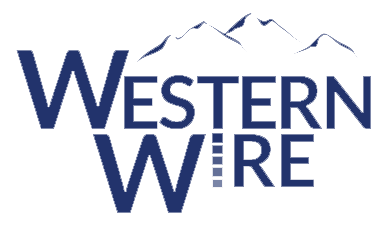The oil and natural gas industry can be its own worst enemy, but media outlets and the public would be more receptive if the industry would pro-actively disclose incidents and offer more education about operations, a panel told executives and employees this week.
Megan Schrader, editorial page editor for The Denver Post, Marshall Zelinger, reporter for 9News in Denver, and Dan Grossman, Rocky Mountain regional director for the Environmental Defense Fund offered their views on reaching skeptical audiences both in election and policy turmoil situations but also on the home-front, when residents express concerns with ongoing industry activities.
The non-industry panelists spoke Tuesday via socially-distanced online video at the Colorado Oil and Gas Association’s annual Energy Summit, offering their take on public messaging for oil and gas companies given the policy and public headwinds in 2020.
“It’s my job to become that expert any given day. What I find is a lot of industries, and oil and gas is no different than any other about using buzzwords or words that are familiar to your industry but foreign to mine,” said Zelinger. As a reporter, he said, industry communications should be thoughtful but also crystal clear in presenting information on complex policy or technical points, which often go hand-in-hand when it comes to concerns about industry products and practices.
“If we struggle to understand what the concept is, it’s hard for me to get a viewer to understand,” Zelinger continued. This may explain some of the oil and gas industry’s frustration with how media outlets portray their activities.
Zelinger, however, admitted that media outlets share some fault. He pointed to television’s repeated usage of stock video, or b-roll footage, from previous reports that can influence viewers’ opinions or give the appearance that industry is being unresponsive to concerns or complaints. He shared video from his station’s reports that reappeared many times. This could be especially true in the heat of a campaign season like 2020, but he acknowledged the need for reporters to use fresh, accurate footage wherever possible.
“If you think the coverage of something isn’t quite right,” Zelinger said, “help us do it right.”
That means sending emails or make calls to the station, he continued. He pointed to his new mission to include “relevant footage” and seek input from COGA, for example, to seek the visuals to illustrate an industry-related story.
Schrader, who previously covered energy and oil and gas issues as a reporter, now resides on journalism’s opinion side. She said industry should focus on transparency and “pro-active disclosure.”
“You can be on the forefront of providing the public with more information than you’re required to provide, just really goes a long way to increase trust,” Schrader said.
To that end, she continued, “industry has come a long way” in just the last decade in increasing transparency from companies and industry outlets. She acknowledged the difficulty facing oil and gas in 2020, given the double-economic impacts of foreign resources and a plummeting demand due to the COVID-19 pandemic.
“I realize we are in extremely difficult times,” Schrader said. “The type of skepticism the public brings when they have a heavy industrial practice in their back yard” means companies need to stay on top of public disclosure and be forthright whenever a concern or incident arises. She said best practices or mitigation efforts employed by the industry should be part of the public relations effort, even for low-risk situations.
Information included in press releases or even on the company’s website, for example, will assist reporters and other media outlets to process and access information to better represent the industry’s point-of-view.
Like Zelinger, Schrader said that the presence or lack thereof of information likely impacted coverage of Proposition 112 in 2018, and subsequent policy battles, like SB 181 or oil and gas drilling proposed near the Great Sand Dunes National Park in southern Colorado.
“The more information they [the public] have, the more trust they’ll have with the industry,” she concluded. Opposition to the Great Sand Dunes was “blown out of proportion” and industry information explaining the geographic details surrounding the proposed drill sites helped steer the editorial page in a different direction, allaying concerns about the Bureau of Land Management lease sale proposals.
COGA also looked to a frequent policy opponent for the devil’s advocate view on persuading skeptics who are frequently unresponsive to industry outreach or distrust transparency efforts that members of the media like Zelinger and Schrader said would help.
For Grossman, who acknowledged his adversarial view as part of EDF, the industry has been ripe for pushback. Being able to “exploit lapses in credibility, that starts with companies or industries not being transparent,” he said.
Being able to work with industry in a non-adversarial, public interest role is more productive, however, according to Grossman, “to pursue policies that are both reasonable for industry compliance and important from an environmental perspective.”
He admitted that he has “responsibility in the credibility department as well. I can’t hide the ball, I can’t cherry-pick data.”
“I can’t advocate positions that don’t have a basis in science or economics,” he added.

